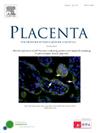Preeclampsia is associated with placental complement C4d deposition
IF 2.5
2区 医学
Q2 DEVELOPMENTAL BIOLOGY
引用次数: 0
Abstract
Introduction
Preeclampsia complicating pregnancy can be life-threatening for both mother and infant, often resulting in maternal and neonatal morbidity. Previous studies have related changes in specific immune factors to preeclampsia; however, the role of the complement system in preeclampsia remains understudied. Therefore, this study aims to examine differences in placental complement deposition in pregnancies complicated by preeclampsia and healthy term control pregnancies. In addition, we compared early and late preeclampsia with healthy term and spontaneous preterm births.
Methods
Placentas from pregnancies complicated by early onset preeclampsia (n = 26), late onset preeclampsia (n = 26), healthy term controls (n = 24), and spontaneous preterm births (n = 14) were investigated for the presence of complement using immunohistochemistry for C1q, C4d, C3d, C5b-9, and CD59.
Results
Deposition of C4d was observed at the trophoblast in 25.5 % of all preeclampsia cases and differed from healthy term controls (p = 0.029). C4d was observed in 12.0 % of late onset preeclampsia and 38.5 % of early onset preeclampsia placentas. None or minimal C4d was found in placentas of healthy term and preterm births. C4d trophoblast deposition significantly differed between early onset preeclampsia and healthy term (p = 0.002) and spontaneous preterm births (p = 0.022). With respect to C1q, C3d, C5b-9 and CD59, no significant differences were observed between the groups.
Conclusion
Our data demonstrate an increase in C4d deposition in placentas of early onset preeclampsia compared to healthy term controls and spontaneous preterm births, suggesting a possible role for the complement system in preeclampsia. Our findings underscore the complexity of preeclampsia pathophysiology and highlight the need for more refined, subtype-specific investigations.
子痫前期与胎盘补体C4d沉积有关。
先兆子痫合并妊娠可危及母亲和婴儿的生命,经常导致孕产妇和新生儿的发病率。既往研究发现特异性免疫因子的变化与子痫前期有关;然而,补体系统在子痫前期的作用仍未得到充分研究。因此,本研究旨在探讨胎盘补体沉积在合并子痫前期妊娠和健康足月对照妊娠中的差异。此外,我们比较了早期和晚期子痫前期与健康足月和自然早产。方法:采用C1q、C4d、C3d、C5b-9和CD59的免疫组化方法,对合并早发型子痫前期(n = 26)、晚发型子痫前期(n = 26)、健康足月对照(n = 24)和自发性早产(n = 14)的胎盘进行补体检测。结果:25.5%的子痫前期患儿在滋养细胞中观察到C4d沉积,与健康足月对照组差异有统计学意义(p = 0.029)。12.0%的晚发型子痫前期和38.5%的早发型子痫前期胎盘存在C4d。健康足月和早产儿胎盘中未发现C4d或仅有少量C4d。C4d滋养细胞沉积在早发型子痫前期和健康足月(p = 0.002)和自发性早产(p = 0.022)之间存在显著差异。C1q、C3d、C5b-9、CD59组间差异无统计学意义。结论:我们的数据表明,与健康足月对照组和自发性早产相比,早发性子痫前期胎盘中C4d沉积增加,提示补体系统可能在子痫前期发挥作用。我们的研究结果强调了子痫前期病理生理学的复杂性,并强调了对更精细、亚型特异性研究的需求。
本文章由计算机程序翻译,如有差异,请以英文原文为准。
求助全文
约1分钟内获得全文
求助全文
来源期刊

Placenta
医学-发育生物学
CiteScore
6.30
自引率
10.50%
发文量
391
审稿时长
78 days
期刊介绍:
Placenta publishes high-quality original articles and invited topical reviews on all aspects of human and animal placentation, and the interactions between the mother, the placenta and fetal development. Topics covered include evolution, development, genetics and epigenetics, stem cells, metabolism, transport, immunology, pathology, pharmacology, cell and molecular biology, and developmental programming. The Editors welcome studies on implantation and the endometrium, comparative placentation, the uterine and umbilical circulations, the relationship between fetal and placental development, clinical aspects of altered placental development or function, the placental membranes, the influence of paternal factors on placental development or function, and the assessment of biomarkers of placental disorders.
 求助内容:
求助内容: 应助结果提醒方式:
应助结果提醒方式:


